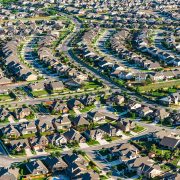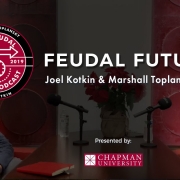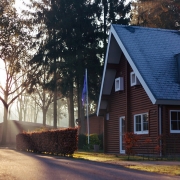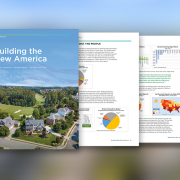Why the 2020 Election Will Be Decided in Suburbia
American politics is increasingly about dueling geographies. Democrats have become the party of the nation’s cities, while the Republican Party finds its base in rural, small town and low-density exurban America, places of less extreme class divisions than the big cities, but also with less diversity and a smaller share of the population.
Yet the political fulcrum of 2020 won’t be found in these competing universes — but in suburbia.
Since 2012, suburbs and exurbs account for about 90% of all metropolitan-area growth. Home to over 80% of residents of the nation’s 53 largest metro areas, the suburbs have nearly half of all voters. Florida has long been the ultimate swing state. As one political analyst put it: “Suburbs are the new Florida.”
In recent years, both cities and rural areas have become more politically monolithic. In 2008, Barack Obama won nearly one quarter of the country’s non-metro counties. Eight years later, Hillary Clinton won barely 10%.
At the same time, voters in big cities have become more rigidly Democratic. In 1984, for example, Ronald Reagan won 31% of the vote in San Francisco and 27.4% in Manhattan. In 2016, Donald Trump won only 10% of the vote in San Francisco and Manhattan.
In sharp contrast, suburban areas remain remarkably well-divided. For the past 20 years the Republican-leaning suburban voters have held steady at 47%, with Democratic leaners at 45%. Successful presidential candidates need to win the suburbs. In 2008, Obama, with many suburbanites under water from the financial crisis, won the suburban vote and the election.
Though suburban voters are evenly split, they can also be fickle, sensitive to immediate economic challenges and less politically ideological. Of the 41 congressional districts that flipped from Republican to Democratic in 2018, 38 were suburban, fueled by a rejection of Trump’s policies such as harsh immigration rules and limiting deductions on taxes — particularly important in diverse high-cost states like California — as well as his personal behavior.
Joe Biden currently holds a big edge with suburban voters, including in key states like Ohio. But there’s time for Trump to shift those voters to his side with pragmatic policies that speak to their needs. Instead, he is using the suburbs as a mythical backdrop for a white suburban identity, even as the suburbs become more racially and economically diverse.
So, he has called out to “the Suburban Housewives of America,“ telling them that “Biden will destroy your neighborhood and your American Dream. I will preserve it, and make it even better!” To show that he has a suburban-centered policy, he recently repealed a 2015 Obama-era regulation, created under the 1968 Fair Housing Act, directing local governments to look for patterns of de facto discrimination or segregation in housing and address them. For that, Trump is casting himself as a defender of the suburbs from an invasion of low-income people.
Trump’s instinct to exploit fear and anxiety is usually quite effective. But that alone is unlikely to win back suburban women, who are abandoning the GOP as never before. One recent national poll found that 68% of suburban women disapproved of the job Trump is doing overall, and 55% said they “strongly” disapprove.
One trouble with Trump is that he’s clueless about who lives in the suburbs now — they are not “housewives” for the most part. This blindness makes it hard for him to come up with policies that actual suburbanites would embrace. But he is right about one thing: The Democrats aren’t necessarily addressing those desires either.
First of all, many people moving into suburbs are millennials, those in their mid-20s to late 30s, who were ditching big metro areas even before the pandemic. Since the coronavirus outbreak, less dense areas, like the suburbs, are growing much faster than denser ones, according to a forecast report from the American Enterprise Institute. And millennials seem increasingly to have the housing preferences of their parents.
Secondly, the suburbs are more diverse now than ever. From 1990 to 2010, the white share of suburbanites fell from 81% to 65%, according to Brookings. More than a third of the 13.3 million new suburbanites between 2000 and 2010 were Hispanic, with whites accounting for a mere fifth of suburban growth. The share of Black residents living in the suburbs of large metro areas rose from 37% in 1990, to 44% in 2000, to 51% in 2010.
People seek out the suburbs because they are relatively affordable, compared with housing in bigger cities, and offer more space, better schools or less crime. Even suburbanites who are “woke” on issues of the environment, race or gender still have economic and family interests, and prefer to control their own communities.
The real issues for suburbanites are those neither party seems capable of addressing — such as improving public education (not simply less or more money), promoting housing programs that would appeal to families eager for single-family developments and affordable homeownership, encouraging remote work and creating economic incentives that could draw higher paying jobs to suburbs, which would in turn reduce long-distance commutes.
For Democrats, the conflict between the desires of millennials for space and safety and the urban-centric policy goals of many party leaders could prove troublesome.
Progressives in California, Oregon and Minnesota have pushed bans on single-family zoning, with many on the left arguing that single-family zoning promotes racial segregation, worsens the housing shortage and increases traffic and pollution.
This drive for density, however, as Kevin Drum of Mother Jones argues, could prove “political suicide” for the Democrats. “The whole point of living in the suburbs is that it’s not the big city,” he notes. “This means that trying to convince suburbanites to become more like big cities is simply hopeless.”
These policies could threaten long-term suburban gains for Democrats — even while millennials, who tend to have very liberal views on race, gender and climate issues, settle into the suburbs. These voters do not react as well as their country cousins to Trumpism’s nativism and were widely considered the cause of the 2018 Republican losses in places like northern Virginia, Orange County and the suburbs outside Houston.
To keep a grip on the suburbs, Democrats cannot count on conservative cluelessness forever, nor can Republicans think that racial dog whistles will bring in the voters on the periphery. Today, both parties still fail to understand the changing demographics and fundamental appeal of the suburbs. Ultimately, the party that best figures out what suburbanites want — and do not want — will likely be the one that prevails in the decades ahead.
This piece first appeared on the Los Angeles Times.
Joel Kotkin is the author of The Coming of Neo-Feudalism: A Warning to the Global Middle Class. He is the Presidential Fellow in Urban Futures at Chapman University and Executive Director for Urban Reform Institute. Learn more at joelkotkin.com and follow him on Twitter @joelkotkin.




 D. Ramey Logan, used under CC 3.0 License
D. Ramey Logan, used under CC 3.0 License



